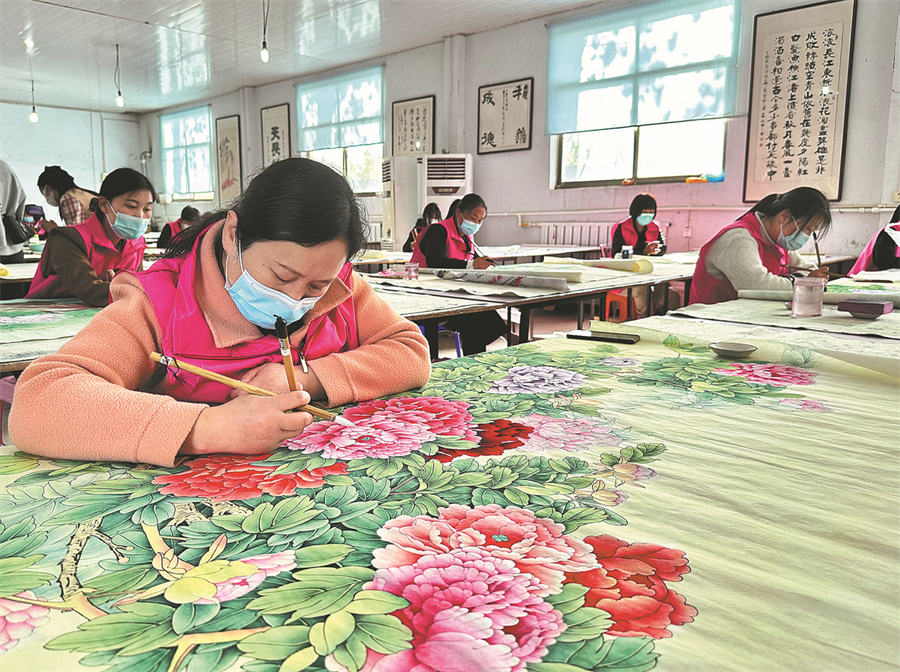Peony painting propels prosperity in Shandong

Farmers paint peonies in the Luxi Painting and Calligraphy Institute in Juye, Shandong province, on Sunday. [Photo by Zhao Ruixue/China Daily]
Known as the "Peony Capital of China", Heze in Shandong province has been cultivating the delicate flower for over 1,400 years, and thanks to this local specialty another industry has bloomed into life.
The painting of peonies in many rural areas of Shandong, but especially in the counties around Heze, has become a profitable industry supplementing the incomes of many farm workers during the off-season.
In the village of Liuguantun, a group of more than 30 women, accompanied by their children, regularly gather to paint peonies at the Luxi Painting and Calligraphy Institute.
Xu Qian, 33, holds a pair of brushes in her right hand — one with pigment and the other with water — as she carefully paints peony flowers in the Chinese realist style known as gongbi.
It takes her a week to finish a 1.8-meter-long painting, she said, adding that working at the institute can supplement her regular income to the tune of around 3,000 yuan ($440) a month.
"This is a decent income. More importantly, I can still take care of my two children," she said.
The promotion of the peony painting industry is proving a success in Liuguantun and the wider county of Juye, where more than 2,000 farm workers have taken to painting to make a bit of money on the side and to enable them to remain locally based rather than traveling away from their homes to make money.
The building of specialized industry is also used in places such as Weifang, which itself specializes in the making of kites.
"We've been teaching farmers traditional Chinese painting for free, and the skills can be acquired usually within a year, or half a year for fast learners," said Xu Fengqiu, the institute's founder.
In recent years, Juye county Party committee and the county government have been attaching great importance to the development of the painting and calligraphy sector, in a bid to boost the rural vitalization strategy.
"The women don't have to travel far from home for work now that they can earn an income while being able to take care of their children and parents at home," said Gao Sujuan, director of the county's publicity department.
In total, there are more than 20,000 farmers in Juye doing painting and calligraphy. Their paintings have been sold to more than 40 countries and regions, according to the county's statistics.
























